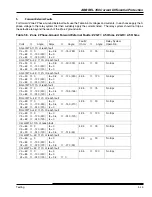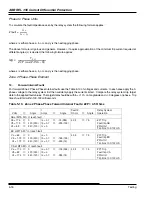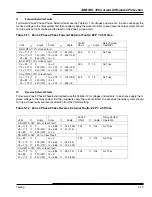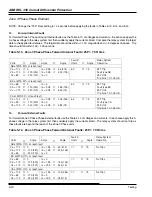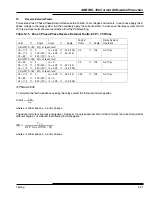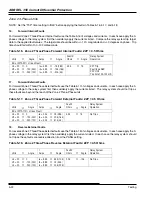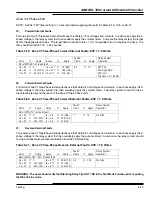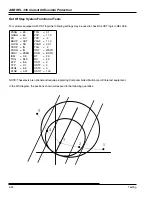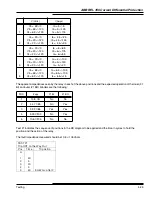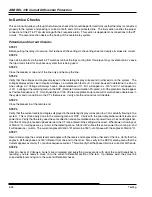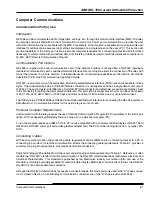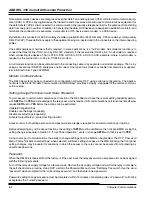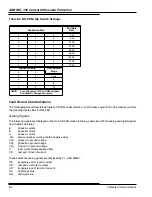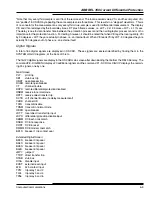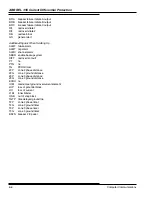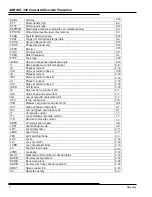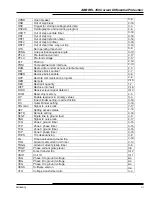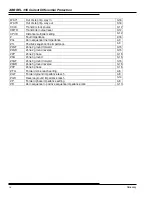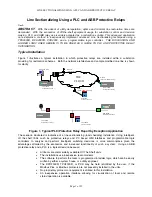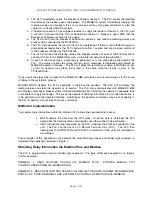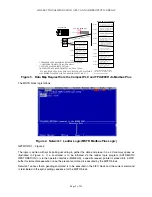
ABB REL 356 Current Differential Protection
6-1
Computer Communications
Computer Communications
Communication Port(s) Use
Introduction
REL 356 can be communicated with for target data, settings, etc., through the man-machine interface (MMI), The relay
can also be communicated with via the communication (comm) ports. Comm port communications, provides the user
with more information than is available with the MMI. For example, all 16 targets are available and a more friendly user
interface for settings can be accessed (all settings are displayed on a single screen on the user’s PC). This section will
provide the details of the comm port options, personal computer requirements, connecting cables and all information
necessary to communicate with and extract data from the relay. Additional communications details are contained in IL
40-603, (RCP) Remote Communication Program.
Communication Port Options
REL 356 is supplied with a rear communications port. If the network interface is not specified, a RS-232C (hardware
standard) communications port is supplied. Network interface comm port option allows the connection of the relay with
many other devices to a 2-wire network. A detailed discussion of networking capabilities can be found in AD 40-600,
Substation Control and Communications Application Guide.
RS-232C, rear comm port is of the removable, Product Operated Network Interface (PONI) type and is available in three
styles. One is identified by a 25 pin (DB-25S) female connector, it is usually black and has a single data comm. rate of
1200 bps. The second style is identified by a 9 pin (DB-9P) male connector and externally accessible dip switches (next
to the connector) for setting the communication data rate. This port option is always black in color, can be set for speeds
of 300, 1200, 2400, 4800, 9600, or 19200 bps and offers an option for IRIG-B time clock, synchronization input.
The third style is a PONI-M Modbus RS485 Product Operated Network Interface for connecting the REL 356 system to
a Modbus Host. Communication details for this option are given in IL 40-616.
Personal Computer Requirements
Communication with the relay requires the use of Remote Communication Program (RCP) regardless of the comm port
option. RCP is supplied by ABB Relay Division and is run on a personal computer (PC).
To run the program requires an IBM AT, PC/2 PC or true compatible with a minimum of 640 kilobytes of RAM, 1 hard
disk drive, a RS-232C comm port and a video graphics adapter card. The PC must be running Version 3.3, or higher, MS-
DOS.
Connecting Cables
With each comm port option the connecting cable requirement can be different. Also, connecting directly to a PC or
connecting to a modem, for remote communication, affects the connecting cable requirements. Table 6-1, provides a
summary of a plug pin assignments, pins required and cable connectors.
APPENDIX M
Some terminology will be defined to aid the user in understanding cable requirements in Table 6-1. Reference, is often
made to the “RS-232C” standard, for data communication. The RS-232C standard describes mechanical, electrical, and
functional characteristics. This standard is published by the Electronics Industry Association (EIA) and use of the
standard is voluntary but widely accepted for electronic data transfer. ABB relay communications follows the RS-232C
standard for non-network data communication.
Although the RS-232C standard does not specify a connector shape, the most commonly used is the “D” shape connec-
tor. As stated in Section 1, all ABB relay communication connectors are of the “D” shape (such as DB-25S).
Summary of Contents for REL 356
Page 23: ...ABB REL 356 Current Differential Protection 1 10 Product Overview and Specifications ...
Page 83: ...ABB REL 356 Current Differential Protection 3 36 Settings and Application ...
Page 127: ...ABB REL 356 Current Differential Protection 5 28 Testing ...
Page 186: ...LINE SECTIONALIZING USING A PLC AND ABB PROTECTIVE RELAY Page 49 of 53 ...
Page 187: ...LINE SECTIONALIZING USING A PLC AND ABB PROTECTIVE RELAY Page 50 of 53 ...
Page 188: ...LINE SECTIONALIZING USING A PLC AND ABB PROTECTIVE RELAY Page 51 of 53 ...
Page 189: ...LINE SECTIONALIZING USING A PLC AND ABB PROTECTIVE RELAY Page 52 of 53 ...

